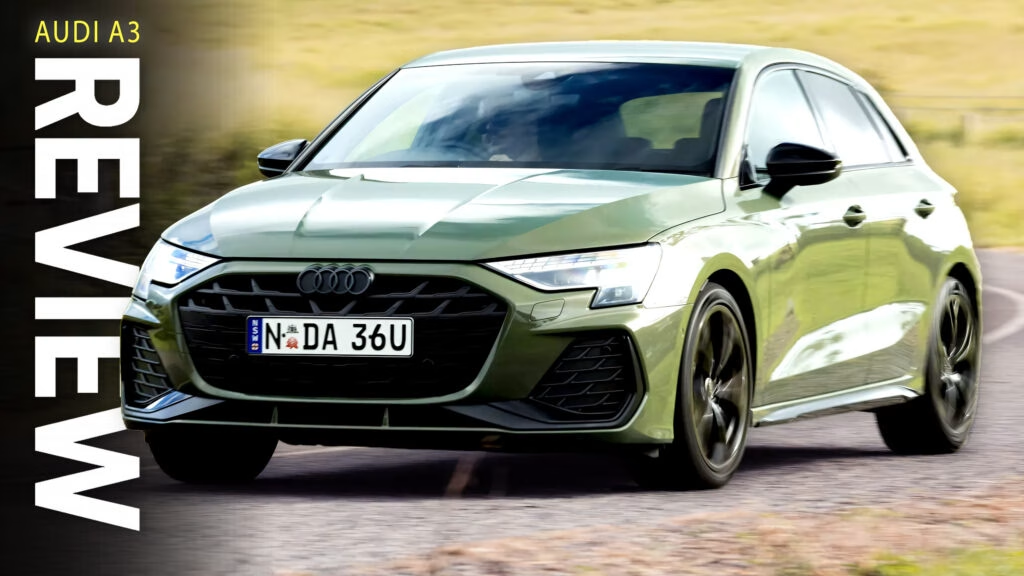Is the 2025 Audi A3 Still a Smart Buy for Premium Hatchback Shoppers?
Why Do Some Drivers Still Choose the Audi A3 Over Larger, Flashier Cars?
Let’s face it: in a world obsessed with SUVs and high-powered EVs, the Audi A3 might seem like the quiet kid at the back of the class. But if you’re after something compact, efficient, and genuinely premium, the A3 still has plenty of tricks up its sleeve. First launched in 1996 and now in its fourth generation, the A3 has evolved into a mature, stylish hatch that’s easy to live with—if you’re willing to pay for the privilege.
What’s Changed for the 2025 Audi A3?
Audi’s latest update for the A3 brings a sharper, more aggressive look. The wider Singleframe black grille and redesigned lower lip spoiler give it a sportier stance, while new LED headlights and taillights add a modern edge. But here’s the kicker: those flashy air intakes on the base 35 TFSI S tronic model? Purely cosmetic, covered in black plastic. Not exactly performance-driven, but they do help the A3 stand out in a crowded parking lot.
The price, however, is a different story. In Australia, the base Sportback now starts at AU$54,800 (about $35,400 USD), up AU$4,200 from last year. The model I tested, with both Comfort and Style packages, clocked in at AU$58,810 (~$38,000 USD) before on-road costs. That’s a hefty chunk for a compact hatch, especially when rivals like the Volkswagen Golf offer similar practicality for less.
How Does the A3 Stack Up on Performance and Efficiency?
Under the hood, the A3 35 TFSI features a 1.5-liter turbocharged four-cylinder engine paired with a 48V mild-hybrid system. The combined output is 148 hp and 184 lb-ft of torque, channeled through a seven-speed dual-clutch transmission to the front wheels. It’s not a rocket—0-62 mph takes 8.1 seconds—but it’s more about balance than outright speed.
The mild-hybrid system adds a modest boost (12 hp and 37 lb-ft), helping with low-speed efficiency and smooth stop-start transitions. The real win is at the pump: Audi claims 5.3 l/100 km (44.3 mpg US) on the combined cycle, and my real-world test returned 5.8 l/100 km (40.5 mpg US). Cylinder deactivation and regenerative braking (up to 12 kW) help keep fuel use impressively low, especially for city commuters.
What’s the Interior Like—Does It Feel as Premium as the Badge Suggests?
Step inside, and the A3’s cabin is a mixed bag. The overall layout is clean and driver-focused, with a perfectly sized steering wheel and Audi’s 12.3-inch virtual cockpit plus digital cluster. The 10.1-inch central infotainment display is crisp and easy to use, and the angular air vents echo the exterior’s sharp lines.
But not everything feels top-shelf. There’s a bit too much glossy piano black plastic, and the abundance of hard, bland surfaces on the dash and doors is hard to ignore at this price point. Still, the seats are a highlight—plush cloth and leatherette, with excellent bolstering and four-way electric lumbar support. Both front seats are heated, but only the driver gets electric adjustment, which feels like an odd corner to cut.
Tech-wise, you get wireless Apple CarPlay and Android Auto, DAB+ digital radio, a wireless phone charger, and a solid 10-speaker audio system. Rear passengers get decent legroom and a temperature control scroll wheel, though no fan speed adjustment. Cargo space is competitive: 380 liters (13.4 cubic feet) with the seats up, expanding to 1,200 liters (42.3 cubic feet) when folded.
How Does the A3 Drive in Real-World Conditions?
Here’s where the A3 quietly shines. Despite sharing its MQB platform with the VW Golf, the A3 feels sportier and more direct. The steering is well-weighted and responsive, making it surprisingly fun on twisty roads. The suspension strikes a sweet spot—composed over bumps, yet agile enough for spirited driving.
The seven-speed dual-clutch transmission is smooth, though not the quickest shifter in the segment. Paddle shifters are there if you want to take control, but honestly, the transmission is happiest left to its own devices. The engine isn’t the most characterful—don’t expect a soundtrack to match the looks—but it’s unobtrusive and efficient.
One quirk: in wet conditions, you might notice some wheel hop if you get too enthusiastic with the throttle. The Nexen tires fitted to the test car offered a good balance of grip and comfort, but if you’re after a more premium feel, you might want to budget for an upgrade.
Is the Audi A3 Worth the Premium Price Tag?
This is the million-dollar question—or, more accurately, the $38,000 question. The A3 delivers on its promise of premium compact motoring, with sharp looks, efficient performance, and a driving experience that’s a cut above the mainstream. It’s not the most exciting car in its class, and the interior materials don’t always match the price, but as an entry point to the Audi brand, it’s hard to beat for badge appeal and day-to-day usability.
However, value-conscious buyers might find better deals elsewhere. The A3’s price hike puts it in competition with larger, more powerful cars, and even some entry-level luxury crossovers. If you’re shopping with your head, the numbers might not add up. If you’re shopping with your heart—and you want a compact hatch that feels genuinely special—the A3 still hooks you.
The big takeaway? The 2025 Audi A3 isn’t about perfection—it’s about smarter adjustments. Start with one change this week, and you’ll likely spot the difference by month’s end.

